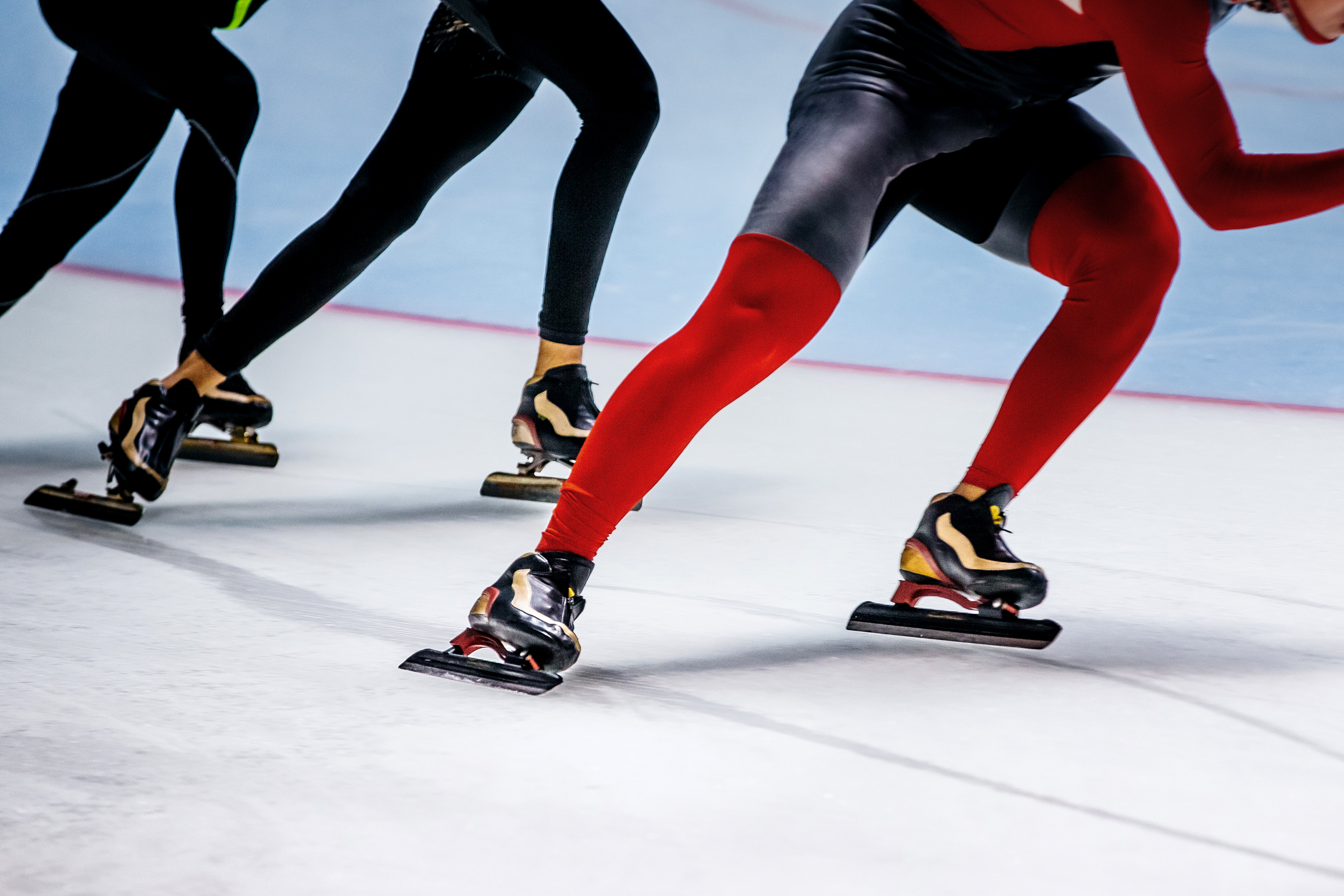
Brock Research Helps Speed Skaters Gain an Edge on the Ice
Canada's speed skaters may have a new competitive advantage courtesy of Brock University researchers.
Professor of Kinesiology Kelly Lockwood and Ph.D. candidates Colin Dunne and Tiffany Hsu are working with kinetic data from inside the skates of Speed Skating Canada's long and short-track speed skaters to inform equipment configuration or, more specifically, how skate set-up can produce faster skaters and best support athlete performance.
A multi-center, multi-year research program funded by Mitacs explores the contribution of equipment to athlete performance. Lockwood said collectively, all parties involved make up a research team to be reckoned with. The team consists of Drs. Kelly Lockwood and Michael Holmes and their doctoral students Colin Dunne and Tiffany Hsu, Brock University; Sean Ireland, Manager, Business Development, Innovation and Technology at the Olympic Oval, University of Calgary; Dr. Julien Clément, Performance Analysis at Institut national du sport du Québec (INS); and Dr. Eric Wagnac, École de technologie supérieure (ÉTS).
Lockwood and the team are working with a company specializing in Intelligent Dynamic Sensing (IDS), XSENSOR Technology Corporation, based in Calgary, Alberta, who designs and develops Intelligent Insole sensors that measure plantar pressure for in-shoe data collection. This research is XSENSOR’s inaugural application to in-skate data collection.
"I think the research team we've put together for that project is significant. It's a powerful team of researchers and industry partners who conduct applied sport science research and have a direct link to both industry and the practice of sport," Lockwood said.
Lockwood's research conducted on the contribution of equipment to sport performance has primarily addressed four topics: (i) material properties, (ii) design, (iii) fit, and (iv) function of sport equipment; all of which independently and/or collectively have the potential to contribute to athlete performance in gliding and sliding sports.
Conducting sport research in real world settings or where the activity typically takes place is often challenged by the lack of portable instrumentation that produces both valid and reliable data that can be used without interfering with the athletes' movement.
In phase 1 of the study, Lockwood, Dunne, and Hsu validated in-skate insole pressure distribution data against the gold standard force plate, for ground reaction force data. This phase confirmed that the innovative sensing technology allows the team to accurately quantify foot pressure and force, thus giving confidence to take the technology to the ice.
"This cutting-edge technology allows us to overcome one of the hurdles of collecting data in the field of applied sport sciences," Lockwood said. "It allows us to quantify the contribution of equipment to athlete performance in real-world performance arenas."
In phase 2 of the study, researchers, performance analysts, and technicians built a database of the unique speed skate configurations that athletes have competed with. "We're looking for that optimal skate set-up for each athlete and for each event, understanding that equipment customization can be influenced by gender, height and weight, physiological preparedness, ability, and technical skillset and preference," Lockwood said. "We then merge these data with performance times to address the question, what are the fastest skaters skating on?"
Next, in concert with the new adjustments to COVID-19 protocols, Lockwood and her group are entering the on-ice phase of the research project: on-ice testing at The Olympic Oval in Calgary, AB and at Institut national du sport du Québec, Montreal, QC, both representing national speed skate training centres. Lockwood and the team will collect and analyze data from Canada's national team and next-gen long and short-track speed skaters.
The in-skate insoles allow the collection of data when an athlete is performing in their sports arena; their ability to generate force, the distribution and application of pressure, and how skate set-up effects specific racing skills, such as starts, corners, and straights.
The instrumentation used in this research provides real-time data to researchers, coaches, and training staff that was once unavailable – moving forward these data can be utilized to inform skate set-up, along with skating mechanics and racing strategies to improve racing performance.

